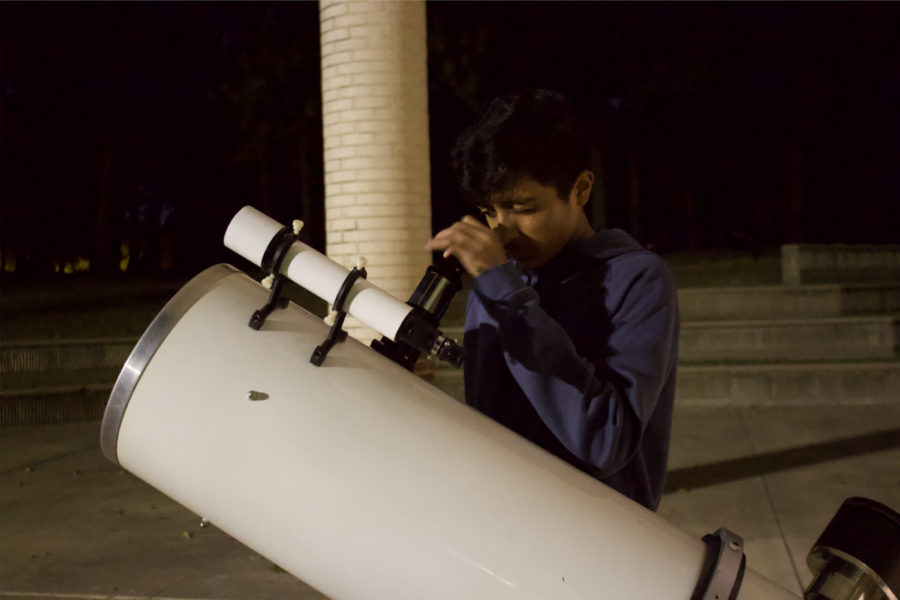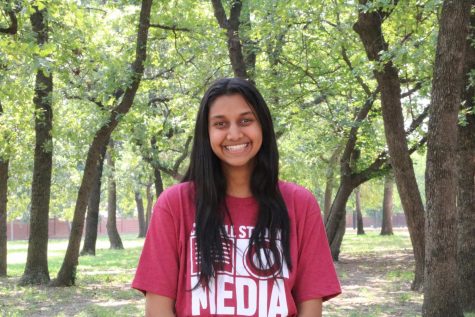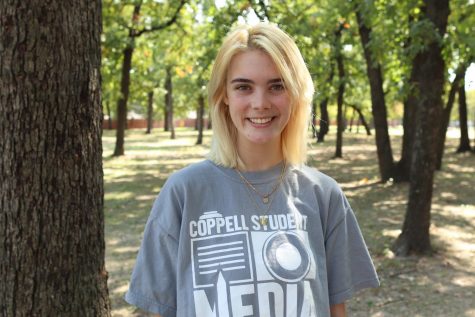Astronomy students zoom in on full moon in frosty night sky
Coppell High School senior Rishith Singhal looks through a telescope at CHS astronomy teacher Angela Barnes Star Party. Barnes frequently hosts events for students to teach earth and space students and anyone who wants to come to learn about astronomy.
November 13, 2019
The stars were not visible last night at the first Star Party of the school year, but the glittering full moon and interactive presentations about the universe shined, satisfying the desires of astronomy enthusiasts and allowing attendees learn about and see what lies beyond the Earth.
Coppell High School astronomy students used technology in their presentations to educate fellow CHS students and staff about the night sky. Topics included constellations, zodiacs, earthly cycles, solstices and equinoxes, seasonal change and the Milky Way. Coppell seniors Bailey Baskett and Trinity Zapata provided information about the constellations and zodiac signs, educating attendees on common misconceptions about zodiacs.
“Constellations have been around since before the Earth and not everyone sees them the same, but everyone looks at them with awe,” Baskett said. “They attach stories to them and can even use them to navigate the world. I love astronomy because of all the mythology that comes with it.”
Zapata takes a different approach in looking at astronomy. Rather than seeing mythology from the past in the cosmos, she looks towards the future.
“I’m interested in it because after all this exploring, eventually we’re going to find something,” Zapata said. “When that day comes, I will be very excited. We’ve found many planets similar to Earth that might possibly hold life forms in the Milky Way and there are plenty of galaxies in the universe. There are so many we can’t get to because they are so far away, so it is reasonable to assume that somewhere very, very far away, there are aliens. It’s statistically unlikely that there aren’t any. It would be arrogant of us to think that we were the only life forms in the entire universe.”
Each of the presentations included a technological aspect allowing attendees to see the night sky in ways that weren’t visible due to the weather and massive amounts of air pollution that blocked the sight of the stars. These apps included Night Sky and Starry Night, which are technologies that accurately portray the makeup of the universe.
The true highlight of the party was the sister telescopes, the Beauty and the Beast. Both of these pieces of technology allow for a clear viewing of the bright full moon in its entirety. Although the stars the astronomy classes had hoped to see weren’t visible, seeing the full moon in close up was just as jaw dropping an experience.
“The only thing up in the sky tonight is the moon,” Coppell astronomy teacher Angela Barnes said. “The planets rose early and set early today, so it wasn’t possible to see those, but being able to see the moon’s craters up close and seeing all the little details in it is beautiful as well.”
Follow Anjali (@anjalikrishna_) and @CHSCampusNews on Twitter.











